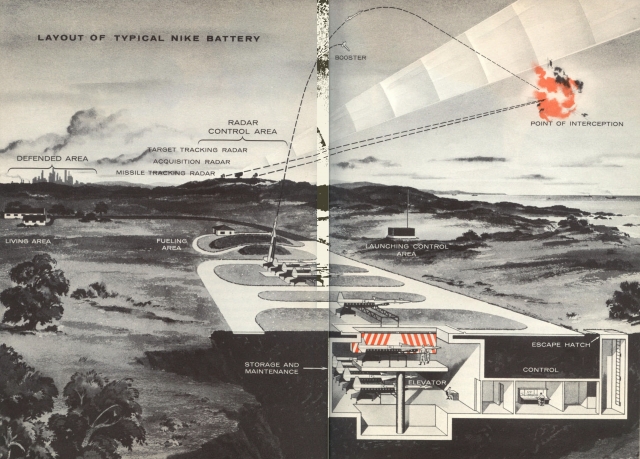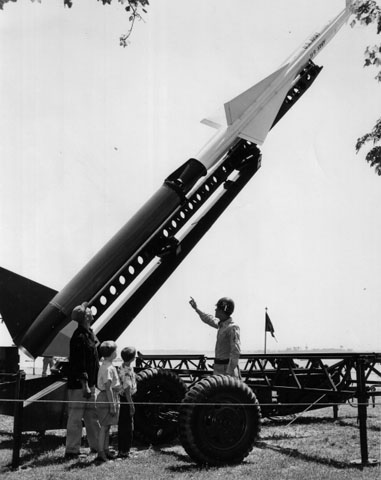|
A nationwide Army study released in 1955 ranked New York City second in national priority behind Washington, D.C. in its need for antiaircraft coverage. This report formally recognized broad priorities that had already been established, and New York was among the first U.S. cities where the Army deployed Nike Ajax missile batteries.
Between 1955 and 1960 the Army constructed 19 batteries around New York, including one at Fort Slocum, designated as Nike Battery NY-15. In addition to the batteries, New York’s air defenses in this period also included three independent radar stations and an area-wide defense control center.
Split Between Two Islands
Plans for the Fort Slocum battery were derived from standard designs developed by the Army and adapted to local conditions. These designs specified a separation of 0.5 to 3 miles between battery’s fire-control and launch areas.
Battery NY-15 met this specification by dividing its components between Davids Island and Hart Island, 1.5 miles to the southwest. This arrangement marked the second time that the two islands had been linked to serve a common military mission. During the Civil War hospitals had been located on both islands, and patients and personnel had regularly moved back and forth between them.
The fire-control area of Battery NY-15 was located on the southern end of Davids Island. This part of the battery contained the radar antennas, tracking equipment and launch control facilities.
The launch area of the battery was on the northern end of Hart Island. This area had the battery’s missile magazines, launchers and assembly and fueling facilities. Because of limited space, there were only eight launchers, four fewer than the dozen typical of New York-area Nike batteries. The battery was normally supplied with 20 missiles, which were stored in two underground magazines.
Communications cables laid across the bottom of Long Island Sound connected the two facilities, and personnel could get back and forth between them as necessary by boat. Like all Nike missile batteries, the two sections were also connected by an unobstructed line of sight.
A Short Lifespan
Construction of Battery NY-15 began in 1954, and it was operational the following year.
Unlike many of the New York-area batteries, Battery NY-15 was not upgraded to the larger and more powerful Nike Hercules missile, whose deployment began in 1958. Almost as soon as this new generation of Nike missiles was brought into service, the Army began closing batteries, and Fort Slocum’s battery was decommissioned in 1961.
By 1974 all batteries around New York had been shut down, for the threat from Soviet bombers had passed, replaced by the peril of intercontinental ballistic missiles, against which the Nike system was ineffective.
|












